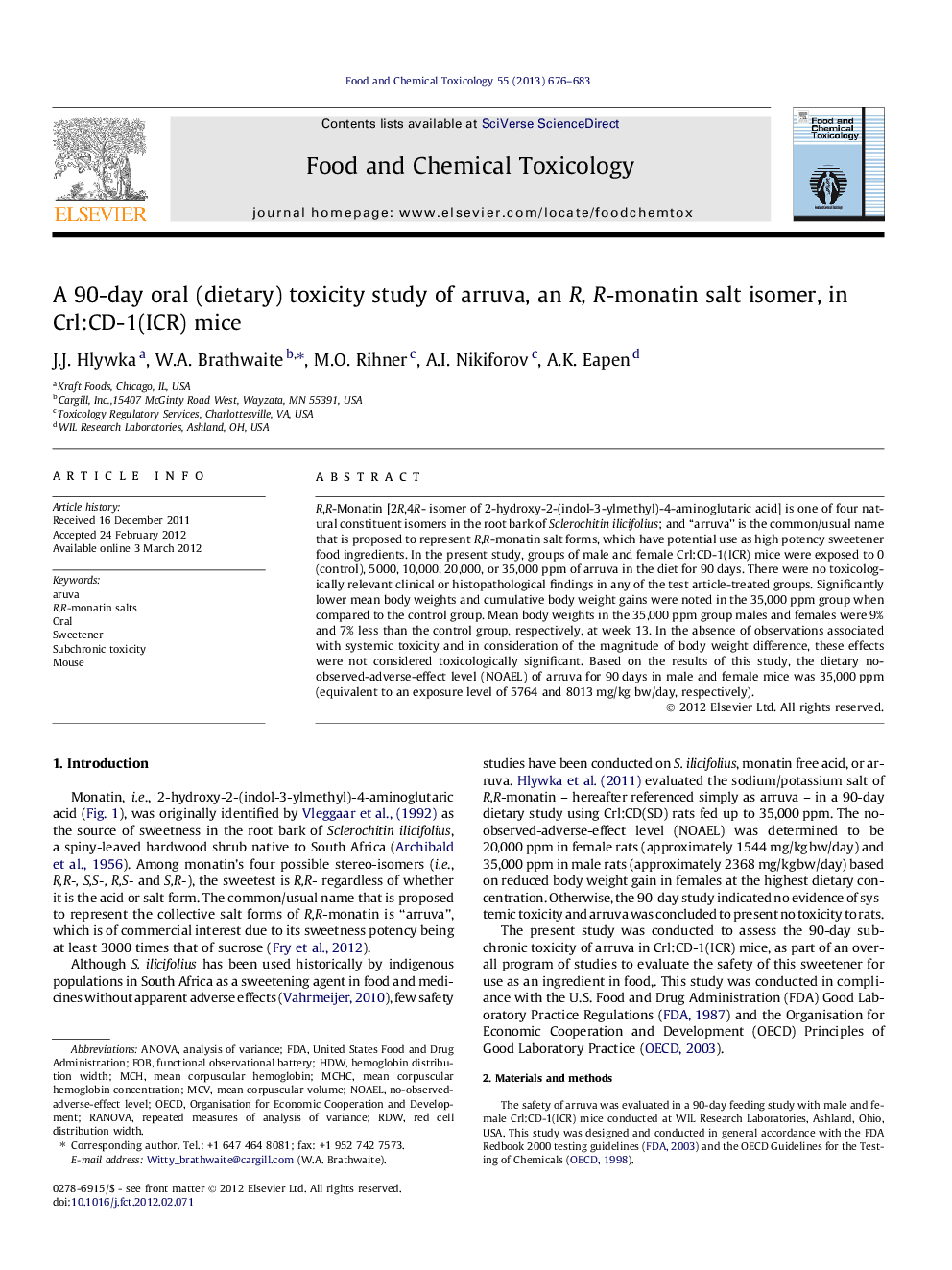| Article ID | Journal | Published Year | Pages | File Type |
|---|---|---|---|---|
| 5851650 | Food and Chemical Toxicology | 2013 | 8 Pages |
R,R-Monatin [2R,4R- isomer of 2-hydroxy-2-(indol-3-ylmethyl)-4-aminoglutaric acid] is one of four natural constituent isomers in the root bark of Sclerochitin ilicifolius; and “arruva” is the common/usual name that is proposed to represent R,R-monatin salt forms, which have potential use as high potency sweetener food ingredients. In the present study, groups of male and female Crl:CD-1(ICR) mice were exposed to 0 (control), 5000, 10,000, 20,000, or 35,000Â ppm of arruva in the diet for 90Â days. There were no toxicologically relevant clinical or histopathological findings in any of the test article-treated groups. Significantly lower mean body weights and cumulative body weight gains were noted in the 35,000Â ppm group when compared to the control group. Mean body weights in the 35,000Â ppm group males and females were 9% and 7% less than the control group, respectively, at week 13. In the absence of observations associated with systemic toxicity and in consideration of the magnitude of body weight difference, these effects were not considered toxicologically significant. Based on the results of this study, the dietary no-observed-adverse-effect level (NOAEL) of arruva for 90Â days in male and female mice was 35,000Â ppm (equivalent to an exposure level of 5764 and 8013Â mg/kg bw/day, respectively).
⺠No toxicologically relevant findings in any of the arruva (i.e., R,R-monatin salt)-treated groups. ⺠Significantly lower cumulative body weight gains were noted in the 35000 ppm group. ⺠Mean bw in 35,000 ppm group males was 9% lower than controls at study week 13. ⺠Mean bw in 35,000 ppm group females was 7% lower than controls at study week 13. ⺠NOAEL of 35,000 ppm, or 5764 and 8013 mg/kg bw/day for males and females.
